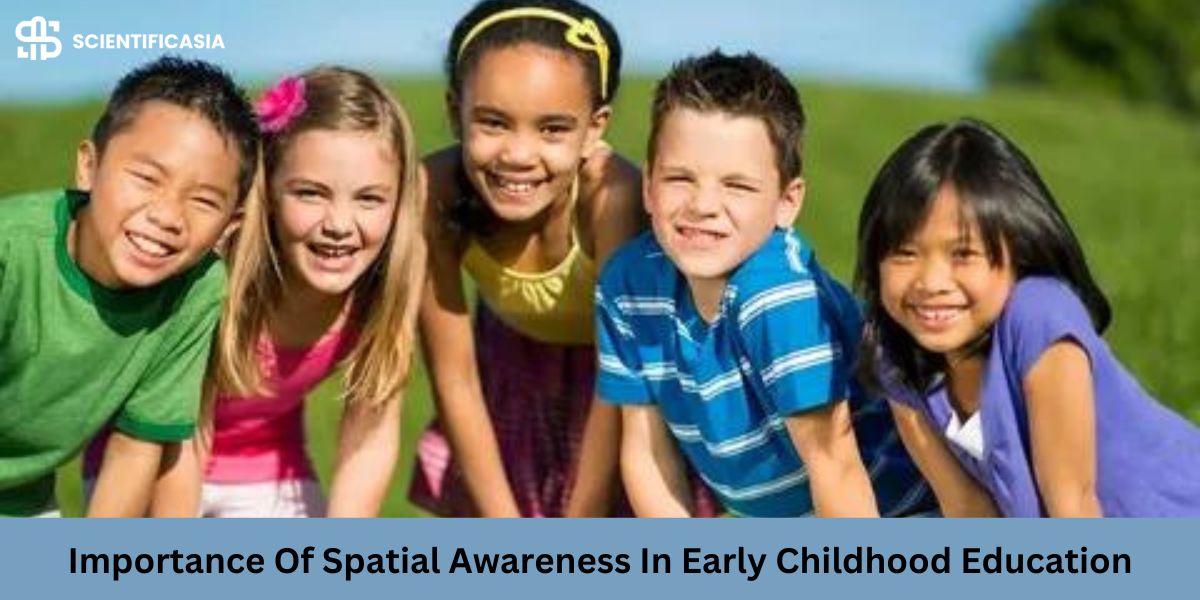Early childhood education forms a basis for continued learning for all children. It gives the very basic mental, physical, and social skills that will scaffold success in life. One of the most important skills is spatial awareness. It is regarded as the ability a child has, in order to understand how his or her body relates to things and the world around him or her.
The importance of spatial awareness for children includes many skills, such as being able to think move things around in space and understand how deep things go. Kids start exploring the world, playing with different things, and managing the journey from a very early age. These are the things that help you become more aware of your surroundings, laying the stage for further, more elaborate cognitive skills.
Importance In Cognitive Development:
Awareness of space is, in fact, perceived as a cognitive process that a child activates within early childhood. The groundwork is fundamentally a process for the child to at least try to solve the problem at hand, think skeptically, and give reasons to a mathematical rationale. Through activities such as building blocks, puzzles, and spatial games, children enhance their spatial reasoning abilities, learning to visualize and manipulate objects in their minds. Such experiences will help build abstract thinking and spatial intelligence.
Enhancing Motor Skills:
Motor development in young children is very connected to their sense of space. Children can improve their skills of hand-eye coordination and fine motor skills through painting, drawing, and making toys, where they are required to plan their space. Children learn to control their movements and handle objects precisely through these things. That prepares them for later jobs, like writing, drawing, and using tools.
Facilitating social interaction:
Their spatial awareness plays a role in their sociability at many cooperative events. In many group-environment settings, children learn how to negotiate their space and maneuver the shared environments of the classroom or playground relative to each other. Spatial awareness in children teaches concepts of space like near, far, behind, and beside and thus makes social interactions and playing with friends easier.
Promoting Creativity and Imagination:
Spatial awareness helps nurture the creative and imaginative aspects of a child through free exploration and manipulation of objects in their environment. Through open-ended activities such as building forts, creating imaginary worlds, and experimenting with different materials, children develop a sense of spatial possibilities and learn to think outside the box. Such experiences create possibilities for innovation and creative thinking in children so that they can express themselves freely and playfully.
Supporting Academic Achievement:
Strong spatial skills are related to school success in a large number of subjects, including nursing education but not limited to mathematics, science, and engineering. Educators help set up children for academic success, both earlier and later in their lives, through such spatial learning activities. Activities in Spatial thinking that help kids include math puzzles, reading maps, and STEM projects.
Incorporating Spatial Awareness in Early Childhood Education:
Educators can be crucial for the creation of a kind of spatial awareness in early childhood settings. The teachers can easily create rich curricular experiences with activities, playful explorations, and challenges with spatial reasoning that support children’s development of space. Do this by engaging children in the exploration of space through strategies like scaffolding, modeling, and offering them open-ended materials.
Emphasizing Sensory Integration:
The ability of the brain to organize and interpret information from the environment that is received by the senses—is related to spatial ability. This means that once a child can experience the texture of a material either by touching, hearing, or seeing, spatial activities like sensory bins with different textures, shapes, and sizes will make sense and help the child to comprehend. By integrating experiences of sensations into spatial learning, the teacher can contribute a great deal to overall cognitive development and learning.
Fostering Resilience And Adaptability:
When exposed to space, allowing children to experiment with problem-solving activities in space, they become more resilient and adaptive, without disappointment from failure. Success in maneuvering through an unfamiliar environment, overcoming obstacles, and just trying new spatial relationships all demonstrate perseverance and modification of steps in attaining a goal. These kinds of experiences with space offer learners both confidence and the willingness to be challenged with new difficult tasks—two characteristics that are critical in school and life success.
Conclusion:
All these factors point towards how the skills of being aware of one’s surroundings impact many areas of a child’s development, for example, their cognitive, motor, social, and intellectual growth. The guidelines, instructors should prepare their children to have what it takes to move around in the world, to cultivate independent thinking in them, and to do well at school, for it is by teaching spatial awareness at a very tender age that the children get to learn on their own. By understanding how critical spatial awareness is and incorporating it into our teaching, we can ensure that every child has the opportunity to fulfill his/her true potential.
Read more:
MySDMC SSO: Manatee County’s Digital Educational Access
MyOLSD Login: Streamlining Educational Access
















